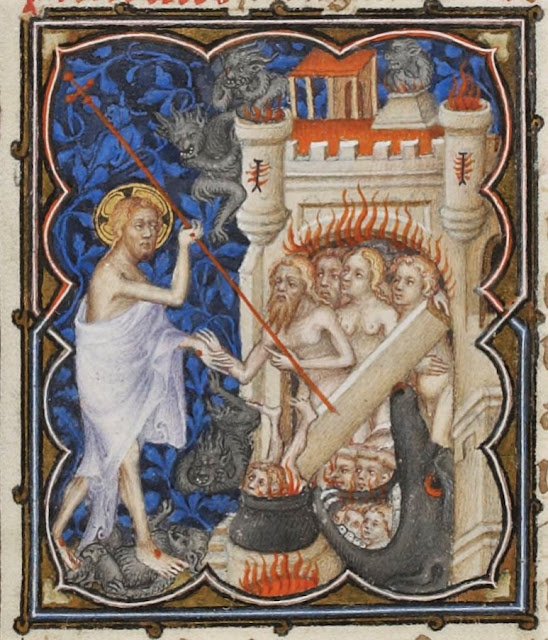_Hours%20of%20Rene%20of%20Anjou_France_Paris)_1410_BL_Egerton%201070,%20fol.15v%20det.jpg) |
| Attributed to the Egerton Master, The Annunciation From the Hours of Rene of Anjou French (Paris), 1410 London, British Library MS Egerton 1070, fol.15v |
"" "Be pleased, almighty God,
to accept your Church’s offering,
so that she, who is aware that her beginnings
lie in the Incarnation of your Only Begotten Son,
may rejoice to celebrate his mysteries on this
Solemnity.
Who lives and reigns for ever and ever."
This is the Offertory Prayer of the Mass for the Feast of the Solemnity of the Annunciation, March 25.
At its very beginning Christianity makes an astounding claim. This is that one of God's greatest messengers, the Archangel Gabriel, visited a teenage Jewish girl in the Galilean town of Nazareth and announced to her that she had "found favor with God" to become the mother of a special child. He told her that her child would be a son and would be named Jesus and that "He will be great and will be called Son of the Most High, and the Lord God will give him the throne of David his father, and he will rule over the house of Jacob forever, and of his kingdom there will be no end.” Her quite reasonable answer was that she didn't see how this could be as she was a virgin, “How can this be, since I have no relations with a man?” (Luke 1:26-35)
The angel responded with the mysterious words: “The holy Spirit will come upon you, and the power of the Most High will overshadow you. Therefore the child to be born will be called holy, the Son of God." And at these words the girl, whose name was Mary, gave her consent. “Behold, I am the handmaid of the Lord. May it be done to me according to your word.” And, nine months later, a baby boy was born in a stable in the Judean town of Bethlehem. (Luke 1:35-38)
This is the Annunciation. It is a feast day of the church that is celebrated on March 25th each year. The date of the event that it commemorates is unknown of course. But there was a belief in the early Church that March 25th was the day on which Jesus was both conceived and crucified. It is difficult to say whether this thinking influenced the date chosen for the celebration of Christmas, the feast of the birth of Christ, as nine months from March 25 is December 25. Or it may have been the other way round, with the date chosen to commemorate the birth of Christ dictating the date on which the Church celebrates his conception.
The Annunciation is a major event in the New Testament, and therefore has a long and complex visual history. Artists have tried to convey some of the mystery surrounding the event and to convey the ways in which thinking about this event developed over time. A list of the many ways in which this iconography has been developed through the centuries is listed below. Please feel free to explore.
- Annunciation – The World Created Anew
- The Annunciation, Part I, Simplicity
- The Annunciation, Part II – Enter A Dove
- The Annunciation, Part III – In the Garden
- The Annunciation, Part IV: "As If She Were A Dove That Dwelt There"
- The Annunciation, Part V: Telling The Whole Story
- The Annunciation, Part VI: The Annunciation Witnessed
- The Annunciation, Part VII, In the House
- The Annunciation, Part VIII, In the Bedroom
















